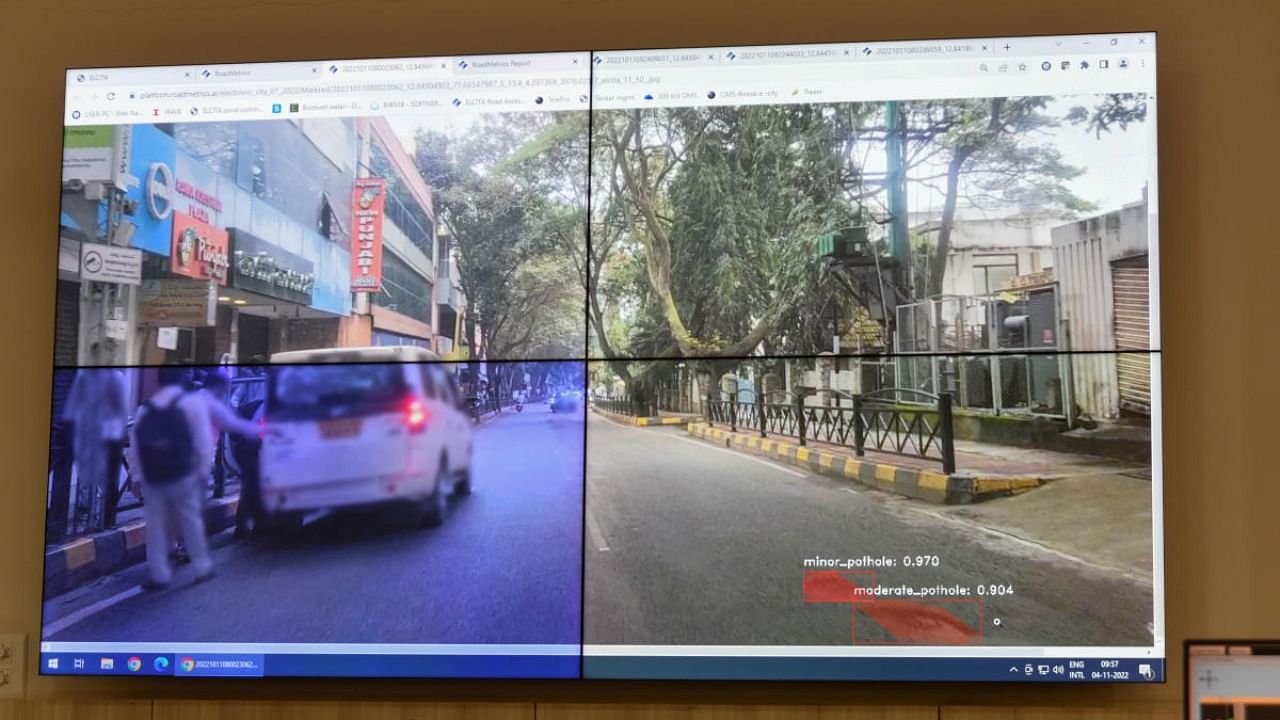
While the Bruhat Bengaluru Mahanagara Palike struggles to deal with pothole issues, an example from a nearby urban local body shows some pointers on how to solve the issue using tech.
Electronic City Industrial Township Authority (ELCITA), an urban local body governing three phases of Electronic City measuring about 903 acres, has 19 km of roads in its limits—all well-maintained, with no potholes or wear and tears to obstruct vehicles. Along with a proactive approach, ELCITA uses an artificial intelligence-based road monitoring system to achieve this.
“A normal android mobile camera is mounted on a car. It moves around and records road conditions. Roads can have multiple types of defects, such as top surface wearing off. The images are analysed using AI-based software, which compares the images with the stock images that have all types of defects as reference. That gives us the exact latitude, longitude and type of defects. Once the defect is identified, the engineering team goes around and rectifies the defect. This helps us speed up the process of defect identification and fix it quickly,” says Ravindra Singh, chief executive officer of ELCITA.
The resolution mechanism is also quick. “We have all materials ready in-house. We have a trained in-house team who knows how to treat different types of defects. Defects are fixed in a span of 8-10 days after identifying them. It’s a constant pro-active process of identification and rectification,” he says. Along with this, ELCITA makes sure the drains are clear and there is no waterlog that could damage the roads.
“BBMP’s challenges are very different. They have to fix the roads dug up by various agencies. We don’t have such problems here, we can fix things sooner since we are autonomous,” he says. However, he feels such an AI-based monitoring system would help even the BBMP identify road problems quickly and respond sooner.
Ejipura example
Anil Kumar, an RTI activist based in Ejipura, feels the quality of roads has deteriorated over time. Also, “When a drain is done, one should ensure where it starts and ends, and whether the water flows into it properly. This is not happening now,” he says.
“Roads are bad because there was no quality. Many roads are beyond repair. They should relay those roads, ensuring quality and with supervision by experts. If the base is not prepared properly, the road does not last long,” he says.
With some effort, people in the locality can make sure a road is laid properly. He gives his own example, where he made sure a good road was laid 15 years ago, at Ashwini Layout in Ejipura.
He took the work order for the road, which specified big boulders of 15 cm to be laid. “After the road roller passes on it two-three times, a 10-cm layer of wet mix comprising stone, quarry dust and cement had to be laid. After this layer is compressed with a road roller, it had to be left for 10-15 days. Then came the final layer of 5 cm of asphalt,” he explains, adding that the road stayed pothole-free for 10 years.
He blames politics and corruption for the poor quality of roads. “The roads need to be relayed by taking into account the current traffic and vehicle density, as per Indian Road Congress (IRC) specifications. These roads were designed for lesser traffic,” he points out.
Following the specifications of the IRC or Ministry of Road Transport and Highway, or BBMP’s own guidelines on the construction and maintenance of city roads strictly would help the city have good roads, he says.